
Giovanni Antonio Canal, commonly known as Canaletto, was an Italian painter from the Republic of Venice, considered an important member of the 18th-century Venetian school.

Giovanni Battista Tiepolo, also known as GiambattistaTiepolo, was an Italian painter and printmaker from the Republic of Venice who painted in the Rococo style, considered an important member of the 18th-century Venetian school. He was prolific, and worked not only in Italy, but also in Germany and Spain.
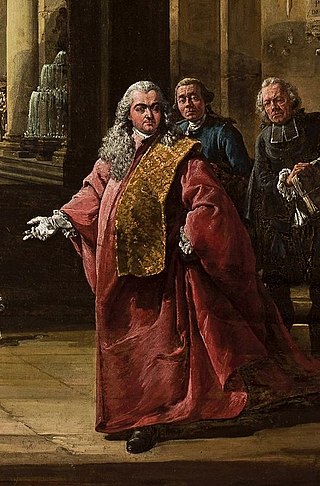
Bernardo Bellotto, was an Italian urban landscape painter or vedutista, and printmaker in etching famous for his vedute of European cities – Dresden, Vienna, Turin, and Warsaw. He was the student and nephew of the renowned Giovanni Antonio Canal, known as Canaletto, and sometimes used the latter's illustrious name, signing himself as Bernardo Canaletto. In Germany and Poland, Bellotto called himself by his uncle's name, Canaletto. This caused some confusion, however Bellotto’s work is more sombre in color than Canaletto's and his depiction of clouds and shadows brings him closer to Dutch painting.

Francesco Lazzaro Guardi was an Italian painter, nobleman, and a member of the Venetian School. He is considered to be among the last practitioners, along with his brothers, of the classic Venetian school of painting.

Caspar van Wittel or Gaspar van Wittel, known in Italian as Gaspare Vanvitelli or Gasparo degli Occhiali, was a Dutch painter and draughtsman who had a long career in Rome. He played a pivotal role in the development of the genre of topographical painting known as veduta. He is credited with turning topography into a painterly specialism in Italian art.
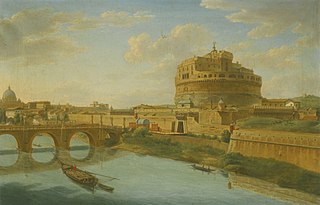
A veduta is a highly detailed, usually large-scale painting or, more often, print of a cityscape or some other vista. The painters of vedute are referred to as vedutisti.
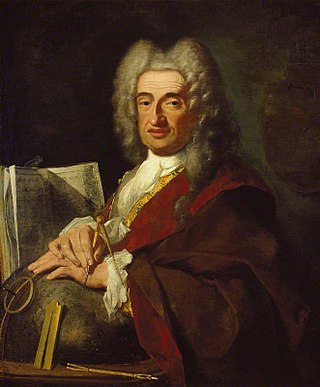
Luca Carlevarijs or Carlevaris was an Italian painter and engraver working mainly in Venice. He pioneered the genre of the cityscapes (vedute) of Venice, a genre that was later widely followed by artists such as Canaletto and Francesco Guardi.

Michele Marieschi or Michele Giovanni Marieschi, also Michiel, also known as Michiel, was an Italian painter and engraver. He is mainly known for his landscapes and cityscapes (vedute), or views, mostly of Venice. He also created architectural paintings, which reveal his interest in stage design.

Giuseppe Zocchi was an Italian painter and printmaker active in Florence and best known for his vedute of the city.

Giuseppe Borsato was an Italian painter, primarily of vedute. Known for his work as the architect, decorator, and painter to the French Imperial Court in Venice.

Ippolito Caffi (1809–1866) was an Italian painter of architectural subjects and seascapes or urban vedute.
Antonio Diziani was an Italian painter of the 18th century, active mainly in painting vedute or landscapes and vistas of Venice.

Giovanni Migliara (October 15, 1785 in Alessandria – April 18, 1837 in Milan), was a nobleman and Italian painter active at the beginning of the 19th century, painting vedute and history paintings.
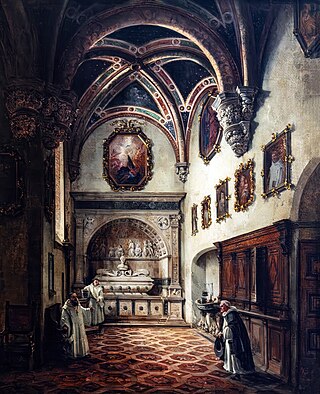
Federico Moja was an Italian painter, known best for his vedute and views of interior architecture.

Pietro Fabris was a painter of Italian descent, active in England and Naples. Pietro is best known for work he completed for the dilettante geologist, the diplomat Sir William Hamilton, which included a number of engravings based on his paintings that depicted contemporary volcanic activity collected in two books, Observations on Mount Vesuvius, Mount Etna, &c. and Campi Phlegraei: Observations on the Volcanoes of the Two Sicilies. He also painted some concert parties sponsored by Hamilton, including one that included a young Mozart at the harpsichord. In other works he produced for sale, he painted Bamboccianti scenes, genre paintings of local folk in native garb at work or play.

Domenico Bresolin was an Italian painter and photographer, specializing in vedute of Venice.
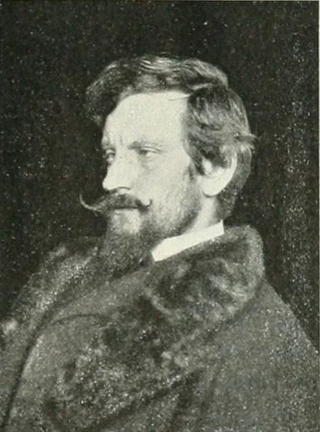
Mario or Marius de Maria was an Italian painter, known for depicting nocturnal landscapes, and gaining the label by the contemporary poet Gabriele D’Annunzio, as the painter of moons.
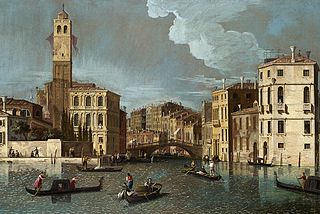
Bernardo Canal was an Italian painter; father of the famous painter, Giovanni Antonio Canal, known as Canaletto. Although he earned his living as a theatrical scene painter, he is best known for his vedute; created under the direct inspiration of his contemporary, Luca Carlevarijs.

The Braid, also known as Femme se coiffant, La Natte, or Girl Braiding Her Hair, is an oil-on-canvas painting by the French artist Pierre-Auguste Renoir, created between 1886 and 1887 during his so-called dry or Ingres period.


















